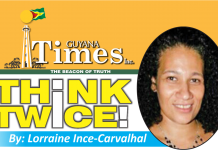It certainly is heartening news that the curriculum is being revamped, but honestly, no matter how diverse the curriculum is and how good the content is, without using a variety of good teaching styles to deliver it, children will not enjoy the benefits.
The style of teaching employed by many schools is not engaging to enough of the students, nor does it encourage critical thinking, and instead students are being fed copious amounts of information that only some are able to recall to pass exams. What happens when these children are called upon to apply that knowledge or to think outside the box?
The continued reliance on classroom and book-based teaching, repetition and pressured exams for reinforcement and review can often result in a divide between students who are considered bright and those who are not. In fact, the divide is often more accurately – those who favour the delivery style and those who do not. Many very bright students fail to reach their potential due to this, and from an early age they fail to learn, find themselves in lower classes, have negative labels attached to them, and sometimes receive lower quality teaching. This can create negative spirals that are difficult to redirect and can also lead to disruptive behaviour from those who are failing to engage.
In order to reach all of the students the importance of preferred learning styles needs to be accepted and applied. Learning styles group common ways that people learn. There are many different types of learning styles but the three basics are Visual, Auditory and Kinaesthetic. Within the visual style there are two sub-channels; visual –linguistic and visual-spatial. Learners who like to learn through written language, such as reading and writing tasks are known as visual-linguistic. They remember what has been written down even if they do not read it more than once. They benefit from the current styles most broadly used but their learning can be further enhanced by the use of detailed hand-outs if students do not have access to the materials used in a lesson with space for note taking and key points emphasised.
Also the use of flip-charts or details on the board of what has been presented and what is to come next helps reinforce learning.
Learners who are visual-spatial usually have difficulty with written language and do better with charts, demonstrations, videos and other visual materials. Teachers can integrate this style into the learning environment by using more graphs, charts, illustrations, or other visual aids. Include outlines, concept maps, agendas and illustrations whenever possible. Brainstorming, using questioning to draw out thinking, encouraging dialogue and group discussion is all beneficial to this preferred learning style. Kinaesthetic learners do best while touching and moving. If there is little or no external stimulation or movement their concentration is easily lost. They like to take colourful notes; using pictures and diagrams. While many may see this as difficult practice past kindergarten, getting learners up and moving during activities is good for this type preferred style and all other students. The use of colour to emphasise key points on the board or on flip-charts makes the points more memorable. Frequent breaks keep the concentration levels high.
Everyone has a mix of learning styles. Some people have a dominant style of learning, with far less use of the other styles. Others use different styles in different circumstances. There is no right style or right mix. Nor are styles fixed. By recognising and understanding learning styles techniques better suited to students can be employed. Using a variety of practices the speed and quality of learning will be improved, teaching and learning will be more interesting for both teacher and student, pupils will be more likely to reach their potential and develop application skills.
In turn the behaviour of the pupils will improve, more respectful relations will be built and the access to learning will be greater.










